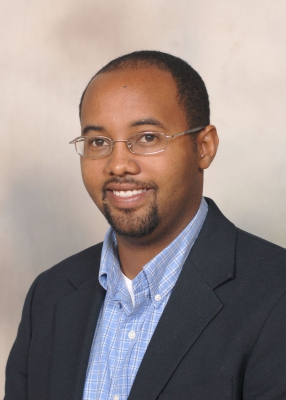
Writer: Ms. Susan M. Collins-Smith, MSU Extension Service
CARSON -- A grant in Jefferson Davis County is opening new doors to teenagers in the fields of science, technology, engineering and math.
Eighteen sophomores, juniors and seniors who attend the Dennis Fortenberry Career Center are the first group of students who will benefit from the $150,000 Mississippi Department of Education grant. The award provided funds to purchase equipment that will help students design and build robots and design and draft two- and three-dimensional objects with the aid of computer technology.
Some of the students are already familiar with designing and building basic robots, a project that introduces engineering concepts. Terence Norwood, Jefferson Davis County 4-H agent with Mississippi State University’s Extension Service, partners with the career center and led an engineering class through the 4-H robotics curriculum as a compliment to the teacher’s subject matter. Norwood also sponsors a separate robotics club in the county through Extension’s 4-H program.
“Incorporating the 4-H robotics program into Jefferson Davis County meets an important need,” Norwood said. “For kids who want to be computer engineers, it heightens their curiosity and provides hands-on learning. The program introduces kids to the possibilities of careers in engineering. It sparks their interest, and they realize that this field may not be as far out of their reach as they once thought.”
So far, robotics has been a hit with students and the school.
“The students are excited about having the robotics program available to them,” said Thomas Johnson, career center director. “The partnership with Terence and Extension has been great. We are able to share a lot of resources that would not have been available to either of us if we were to conduct our programs alone.”
Norwood, who holds an education degree, said robotics is a very popular program among his 4-H members. Since his involvement at the school, he said interest in the 4-H robotics program has grown substantially.
Norwood’s teaching approach is likely part of the appeal.
“Whether I’m working with my 4-H’ers or students at the school, I try to break it down for them in a way that they can understand and relate to,” Norwood said.
Norwood begins with the basics. First, participants build a robot that will perform a simple task, such as starting and stopping. But to have a robot perform a task, it must be programmed.
Norwood uses a peanut butter and jelly sandwich to introduce beginners to the process of programing a robot. Students write down all the steps required to make the sandwich and then make a sandwich following their own instructions -- while blindfolded.
“This helps them understand the programming process,” Norwood said. “If they leave out the step of taking the top off the jelly jar, they can’t accurately perform the rest of the task. Once they are able to understand and relate programming to concepts they are already familiar with, they retain the knowledge.”
This process helps them understand the basic parts of a robot and their functions. As the studetns learn more, they build and program more complex robots that can perform harder tasks, such as sorting M&Ms by color.
Unfamiliar scientific concepts can be difficult for students, but the challenge motivates them.
“It is amazing to watch them work out a problem, because I don’t provide them solutions when they get stuck. I help them determine their own solutions,” Norwood said. “Even though it can be frustrating for them sometimes, they don’t give up. They really enjoy it because it’s rewarding when they can achieve the goal they set for themselves.”
Johnson has created a career technology lab with some of the equipment purchased with the grant. He said the equipment will help expand the horizons of all the students.
“Technology is where the workforce is headed,” Johnson said. “There are wonderful industrial and technical jobs out there that are not necessarily in the engineering field for people who have the right training. And this equipment is the beginning of that. It is great for these students.”